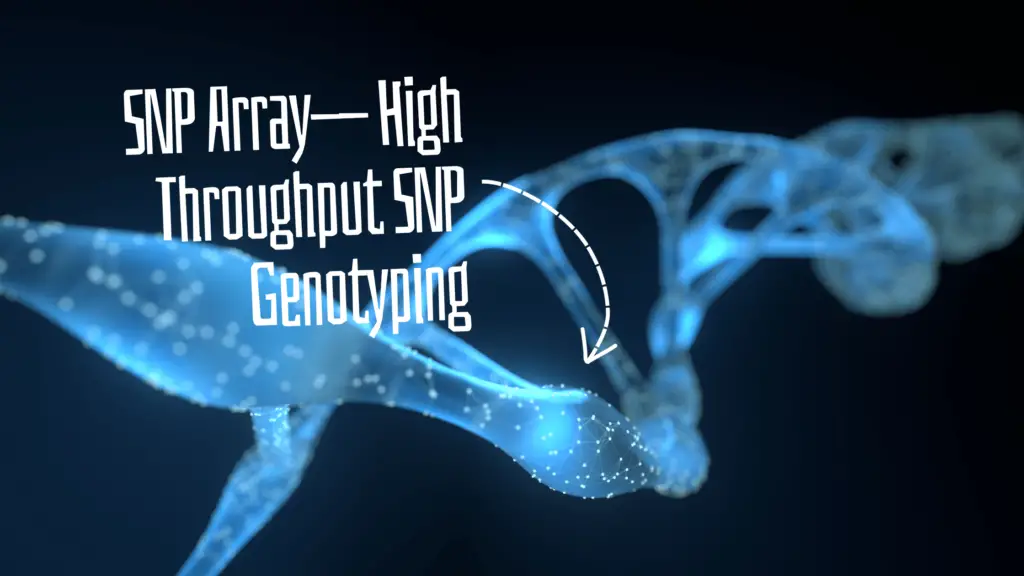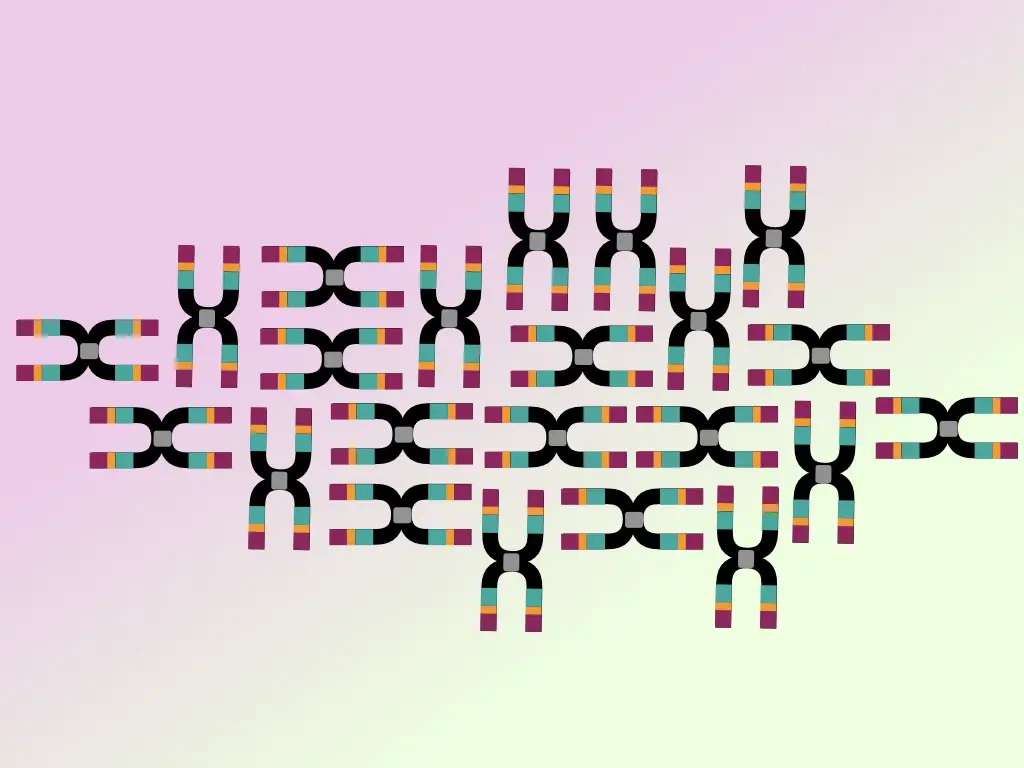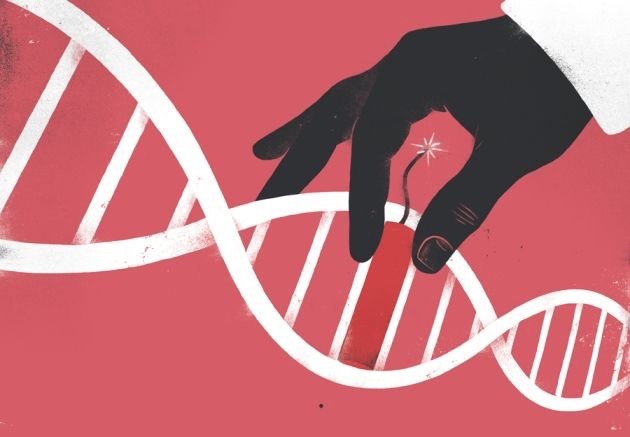“An SNP array is a hybridization-based high throughput technique used for SNP genotyping. Explore the concept, principle, working and applications of SNP array in this article.”
Techniques like conventional karyotyping, FISH and high-resolution FISH have limited resolution power up to 10MB, 1MB to 100KB and 10KB or less, respectively. In addition, these techniques have limited throughput.
To effectively screen genomic variations like CNV or CNA, duplications or deletions from the entire genome, these techniques can’t work. SNP array is an efficient microarray-based genotyping technique used for genome-wide screening of alterations.
It can screen thousands of polymorphisms in a single run with a resolution of 10KB. In this article, I will explain the principle, process, advantages and applications of the SNP array.
Stay tuned.
Related article: Gene Expression Microarray– Principle, Process, Advantages, Limitations an Applications.
Disclaimer: Information provided here is collected from peer-reviewed resources and re-presented in an understandable language. All the sources are enlisted at the end of the article.
Key Topics:
What is an SNP array?
SNP array or SNP Microarray is an array CGH or comparative genomic hybridization technique developed in 1998. The first SNP array could detect 558 SNPs.
Later on, Affimatrix developed a high-resolution and High-throughput SNP genotyping technique that covered around 10,000 various genomic alterations. Now we have various SNP arrays that can even detect millions of genomic alterations.
It’s a DNA hybridization-based technique in which the sample is allowed to hybridize with the probes immobilized on the slide. It’s widely used in various fields including medical science, diagnosis, cancer research, plant and animal research and environmental studies.
In recent times, scientists have been using the SNP array to investigate the association between complex traits and genomic alterations. Therefore, it has widespread applications in polygenic and disease susceptibility studies.
Principle of SNP array:
The SNP array relies on the principle of DNA hybridization. Here, millions of known sequence probes have been immobilized on the solid surface on which the sample DNA is allowed to hybridize.
The hybridization signals are captured using a fluorescent dye, which upon hybridization emits fluorescence. Positive hybridization signals have been recorded and assessed accordingly using the sequence or genomic information.
The evaluation process entirely depends on the computational analysis. Data of various genomic loci being investigated; has been pre-filled in the software, along with the information on probe types and locations on the chip.
The program processes the data accordingly and prepares a genomic hybridization map of various SNP loci.
Process of SNP Array:
SNP array, much like other microarrays, is a simple process. Here is a brief explanation of each step of the SNP array.
Probe Design and Immobilization:
Probes are smaller, single-stranded and known DNA oligonucleotide sequences that have been immobilized on a solid glass slide. Millions of oligonucleotide probes are designed to target various genomic loci being investigated.
After the probe design and synthesis, the probes are immobilized on the solid glass. Chemical spry, micro-mechanical printing and in situ synthesis are three common methods used to prepare SNP array probes.
Around 1 cm * 1 cm area of the glass slide contains 4,00,000 oligonucleotide probes. Note that SNP chips for gene panels, multigenic disorders, population studies and whole-chromosomal studies are now available commercially.
(no need to prepare it on our own!)
Related article: DNA Probe: Labeling, Types, Applications and Limitations.
Sample preparation, fragmentation and labeling:
Now DNA is isolated from the patient and control sample, fragmented using the restriction digestion technique and labeled with a fluorescent dye. Two different colored fluorescent dye has been used to label the fragments of two different samples.
Related article: DNA fragmentation- Techniques, Importance and Applications.
Hybridization:
Now the prepared-labeled DNA sample is allowed to hybridize on the glass slide. The slide already contains various sequence-specific probes that represent the SNP of specific loci.
Hybridization will take a few hours. Once it is ready, we can wash the sample to remove the unbound DNA fragments and send it for detection.
Fluorescence detection:
A fluorescent detector present in the machine scans the slide and collects the fluorescence signals from each location or for every probe immobilized on the slide. The presence or absence of a fluorescent signal would be used for SNP genotyping purposes.
Genotyping and data analysis:
Now the software analyzes the signals, identifies hybridization locations and accordingly prepares a genome-wide or sample-wide SNP genotyping map.
This image is a chromosome-wide whole-genome SNP array map for a sample. As you can see the software first collects the signals and arranges them according to the location of the target loci in the genome.
Using various computational and complex mathematical calculations, the software provides us with a complete report of the SNP genotyping.
This one is another type of microarray result. The sample and control DNA are allowed to hybridize on each chromosome loci and the results look like this.
Advantages of SNP array:
- An SNP array has a higher resolution compared to karyotyping or FISH. It can investigate alterations lower than a few KB in size.
- It’s a high throughput technique. It enables us to study thousands to even millions of alterations from not only single but many samples.
- It has genome-wide coverage. CNVs and CNAs from the whole genome can be investigated.
- It can even prepare a high-resolution karyotyping for the sample. As we see in the image above.
- Besides, the technique is fast, cost-effective, handy and easy to perform.
Limitations:
- SNP microarray can’t detect inversions, or balance translocations, for example— Robertsonian Translocation.
- It even can’t determine the genomic gain at a particular chromosomal position.
- It requires prior-sequence data to prepare the SNP chip as well as the assay. Thus, it can only determine known genomic alterations.
- The resolution available by present SNP arrays is yet not enough to study smaller CNVs smaller than a few hundred base pairs.
Applications:
Now, coming to the important part of this article. How we are using the SNP array actually. It can effectively study genomic gain and loss such as copy number variations, copy number alterations, unbalanced translocations, deletion and duplications.
It can also detect aneuploidies, copy-neutral alterations, Loss of heterozygosity, absence of heterozygosity and >20% mosaicism. Here are several common applications of the present technique.
SNP arrays’ major application is in genome-wide association studies. SNP loci across the entire genome, associated with diseases, traits or conditions can be identified and studied.
High-resolution SNP array is widely used in disease susceptibility studies and disease risk assessment. Scientists analyze thousands of genomic loci or genes and determine someone’s risks associated with diseases like cancer, cardiovascular and autoimmune diseases, etc.
Yet another widespread application of the SNP array is in population studies. The prevalence of various pathogenic or disease-associated SNP or CNVs can be studied and identified. Such investigation helps to determine a particular population’s risk of acquiring a disease.
SNP microarray has immense potential and is thus employed in various fields. Another crucial application of the present technique is in cancer screening and research. Cancer is a complex and multigenic condition. Here various genes and chromosomal alterations are involved.
SNP array allows the study of genomic alterations, loci, and chromosomal regions oR genes associated with a particular type of cancer. Due to this reason, the present technique is used in the screening, diagnosis, prognosis and monitoring of cancer.
Note that costume SNP chips are now available for particular types of cancer, sets of genes or genomic loci. For example– breast cancer SNP microarray enables scientists to study various mutations from BCA1, BRCA1 and other genes associated with breast cancer.
Related article: Breast Cancer Genetics.
Besides, as we said above in this article, SNP arrays are employed in plant research, personalized genomics, DNA fingerprinting, comparative and function genomic and nutrigenomics studies.
Wrapping up:
I’m a trained geneticist and worked in genetic laboratories. I know and worked with these techniques. Let me tell you that SNP arrays are not meant to study single nucleotide polymorphism. Rather, it studies polymorphism associated with a locus.
Put simply, it can do what karyotyping or FISH can’t do! Meaning, studies so many alterations with high resolution. It studies major copy number variations and other known genomic alterations.
I hope you like this article. Do share it and let me know in the common if you have any questions.
Sources:
Mao X, Young BD, Lu YJ. The application of single nucleotide polymorphism microarrays in cancer research. Curr Genomics. 2007 Jun;8(4):219-28. doi: 10.2174/138920207781386924. PMID: 18645599; PMCID: PMC2430687.
Balagué-Dobón L, Cáceres A, González JR. Fully exploiting SNP arrays: a systematic review on the tools to extract underlying genomic structure. Brief Bioinform. 2022 Mar 10;23(2):bbac043. doi: 10.1093/bib/bbac043. PMID: 35211719; PMCID: PMC8921734.
Subscribe to our weekly newsletter for the latest blogs, articles and updates, and never miss the latest product or an exclusive offer.



